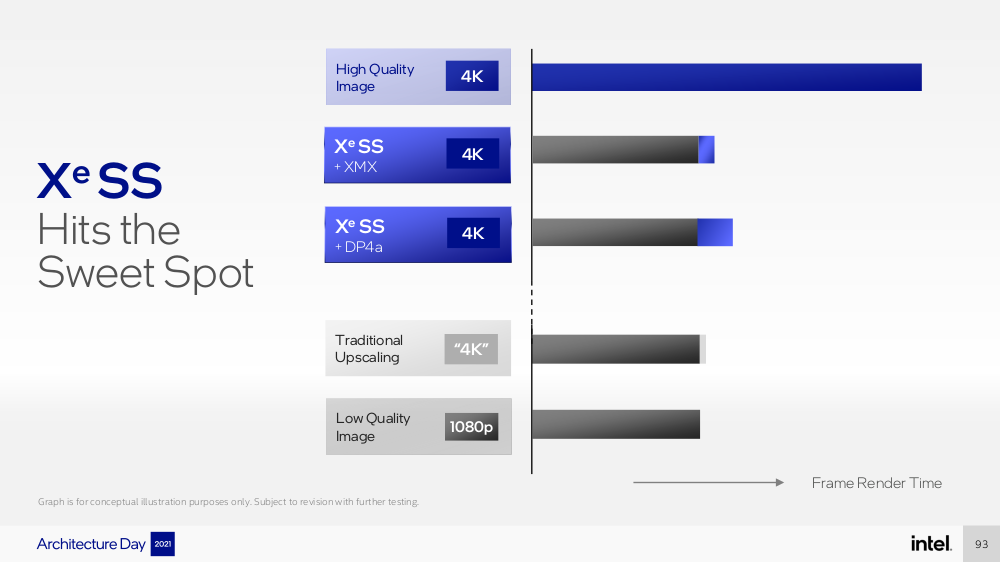Why it matters: Intel shed light on some more details about its upcoming high-end gaming graphics cards as part of its Architecture Day 2021 presentation, including its AI-powered super sampling solution which it calls Xe Super Sampling (XeSS). XeSS will have two modes, a presumably more effective solution for Intel's own hardware and another one that will run on AMD and Nvidia cards as well as integrated graphics.
The way Intel's presentation describes XeSS makes it sound much more similar to Nvidia's Deep Learning Super Sampling (DLSS) than AMD's recently unveiled FidelityFx Super Resolution (FSR). Like DLSS, XeSS is a temporal solution that will use information from previous frames in order to upscale a game to higher resolutions while saving on performance.
The presentation included a demonstration of XeSS upscaling a real-time demo Intel made from 1080p to 4K. Though it wasn't a demo of a real game and didn't show any framerate counter, the upscaled image looked extremely similar to the native 4K image. Intel says the frame time while upscaling from 1080p will be slower than just running a game at 1080p, but still a lot faster than native 4K.
That demo used a hardware-accelerated super sampling mode Intel calls XMX which will work exclusively on its recently unveiled Arc graphics cards, using their Xe Matrix Extension (XMX) cores. The other version of XeSS should run on any hardware with DP4a instruction, which includes Nvidia GPUs, AMD GPUs, and integrated graphics chips. Intel didn't go into detail on how well the DP4a version will work, but called it "a smart quality-performance trade-off."
Intel confirmed developers will be able to get their hands on the SDK for the XMX version of XeSS this month, with the DP4a version coming later this year. Intel plans to make the tools and SDK open-source later on as XeSS matures.
Intel also said Unreal Engine 5 is already running on Arc cards, and that they'll support both DirectX ray tracing and Vulkan ray tracing.
This was all part of a much bigger presentation in which Intel covered the future of its CPUs, data centers, and more.
